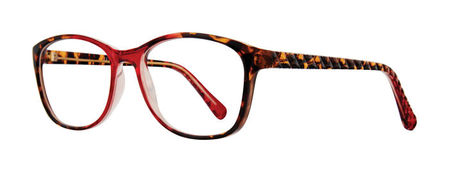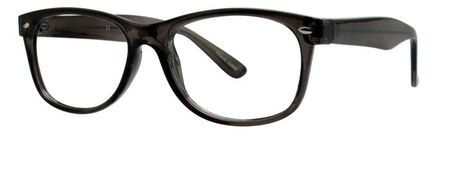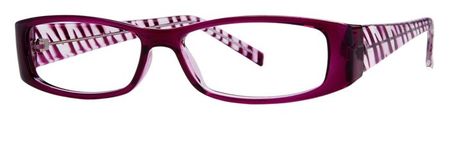Reading Glasses Des Moines - Vision Side effects of COVID-19
Des Moines, city, capital of Iowa, U.S., and seat (1845) of Polk province. The city lies on the Des Moines River at its crossroads with the Raccoon River in the south-focal piece of the state. Arranged in the core of the Corn Belt, it is the focal point of Iowa's most crowded metropolitan region, which incorporates the urban areas West Des Moines, Urbandale, and Pleasant Hill. Stronghold Des Moines was laid out in 1843 at the conjunction of the two streams to safeguard the privileges of the Sauk and Fox people groups who then, at that point, occupied the area. The region was opened to pilgrims in 1845.
In the event that you are encountering any of these side effects, it might very well be the ideal opportunity for you to do whatever it may take to assist yourself with seeing typical ones once more. Recuperating from COVID-19 is frequently practically indistinguishable from recuperating from a horrendous mind injury. The nerves between your cerebrum and eyes need proficient assistance and time to recuperate. The side effects above can endure anywhere from several days to two or three months, contingent upon how quickly you see an eye specialist and begin your way to recuperation. Contemplating whether COVID-19 has impacted your vision? Coming up next are the 7 most normal waiting vision side effects of COVID-19:
- Cerebral pains
- Aversion to light
- Perusing and memory challenges
- "Cerebrum mist"
- Exhaustion
- Foggy vision
- Unfortunate profundity insight
Similarities Between Lyme Disease and COVID-19 Lingering Symptoms
Lyme Disease is a tick-borne sickness brought about by a bacterium called Borrelia Burgdorferi. Strangely, the side effects that individuals experience from Lyme Disease are practically indistinguishable from those individuals experience from COVID-19, particularly with regards to vision. Lyme Disease and COVID-19 both cause irritation all through the body, influencing the optic nerves and causing foggy vision and other eye issues. As per the National Library of Medicine, during the flood of COVID-19 cases there was a - potentially counterfeit - decline in Lyme sickness diagnostics regardless of Americans investing more energy outside in 2020 than in 2019. Lyme Disease can without much of a stretch be confused with COVID-19, so look out for influenza like side effects, particularly in the wake of being outside! Since the waiting side effects are so comparative between Lyme Disease and COVID-19, it is additionally basically the same as treating these side effects.
How Vision Therapy Can Help
Whether you experience the ill effects of hypertension, diabetes, or blood problems, it is energetically prescribed that you do whatever it may take to fix your vision assuming a hindrance is capable in the wake of being tainted by COVID-19. Vision Therapy is one of the most outstanding demonstrated ways of treating COVID-19 waiting vision side effects. It can lessen side effects fundamentally and ordinarily fix them together. During vision treatment, a dream specialist will take you through an assortment of vision practices that reinforce the brain connections that interface your eyes and cerebrum. Vision treatment is adjustable to your special case and can work on your personal satisfaction by assisting you with seeing ordinary once more.
What is Blue Light?
Blue light is a name used to depict the noticeable light range between 420 to 480 nm. A short frequency is exceptionally close to the light range to bright (UV) light from the sun. Because of its area on the light range close to UV beams, it is an extremely focused energy light that can be both harming and valuable. While vision insurance contracts contrast across suppliers, a few contracts really do offer inclusion for eye tests. Vision inclusion is viewed as an extra to standard health care coverage, so there are commonly a few extra expenses included.
Insurance agencies have taken to making two classifications for visits to an optometrist's office: clinical visits and routine visits. The two sorts of visits are as yet considered full eye tests, with a similar sort of care. Where they contrast is the justification behind the visit: Routine visits search for indications of normal vision conditions, while clinical visits will search for conjunctivitis, glaucoma, waterfalls, or age-related macular degeneration difficult circumstances that could require a medical procedure. Different health care coverage plans will have their own approaches about inclusion for routine visits contrasted with inclusion for clinical visits. For routine visits, most plans contain a few inclusions for glasses and contact lenses. Different plans could cover just a specific number of yearly routine tests.
The sum of the visit might be covered or just a part of it. With regards to clinical visits, most back up plans will cover those tests assuming that there is proof or sensible doubt of an eye medical condition. It is normal for individuals to discuss the blue light that is delivered by your telephone or PC screens. In any case, did you have at least some ideas that the greatest maker of blue light is the sun? The UV beams from the sun create significantly more blue light than some other light source. However, screens are as yet a major issue. We hold them so near our eyes for extensive stretches of time which makes our eyes ingest blue light at a focused energy.
Important to Protect Your Eyes from Blue Light
The bluer light that you ingest, the less your body will create melatonin. Melatonin is the body's regular chemical that makes you become tired around evening time. This becomes irksome when the time has come to hit the sack. In a survey by Single Care, it was viewed as a stunning 88% of grown-ups fret because of marathon watching TV. Also, 62% of grown-ups say that "they don't rest as well as they would like." The National Sleep Foundation proposes taking care of the screens no less than 30 minutes before you hit the hay for better rest. As well as having a better of rest, shielding your eyes from blue light will likewise assist with the accompanying:
- Cerebral pains
- Eye weariness
- Dry eyes
- Bothersome eyes
- Obscured vision
The most effective method to Protect Your Eyes from Blue Light
To shield your eyes from an over-burden of blue light and the harming incidental effects, you should avoid potential risk. Here are probably the most straightforward ways of restricting your openness to blue light in your day-to-day existence: At the point when you are not working,
attempt to restrict your screen time: In this computerized world, it is exceptionally difficult to try not to take a gander at a screen while at work. Nonetheless, you can restrict your screen time when you're not working! Attempt to foster side interests that don't expect you to utilize a screen, your eyes will be much obliged!
Download a blue light channel application for your gadgets: Assuming you should utilize your gadgets around evening time, take a stab at downloading an application that will sift through the blue light for you! In the event that you utilize an iPhone, set up a "night shift" to begin every evening and end every morning consequently.
use shades when you are outside: Keep in mind, while our screens produce blue light, the sun creates considerably more! Continuously wear shades at whatever point it is conceivable when you are outside. An excellent focal point can obstruct 99-100 percent of all UV radiation. Plan customary complete eye tests. There could be no more excellent method for guaranteeing you are keeping your vision solid than by going to ordinary eye tests. Plan one today!






